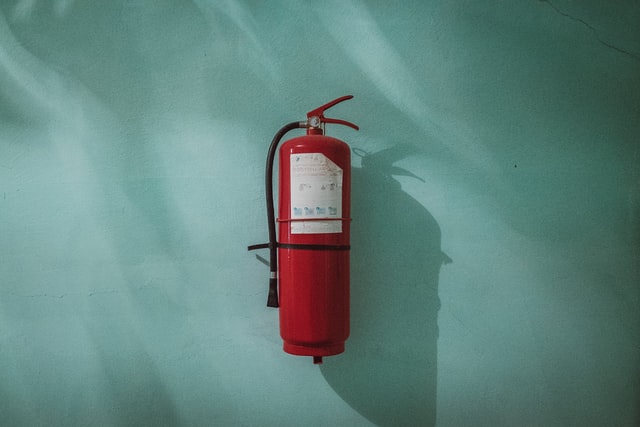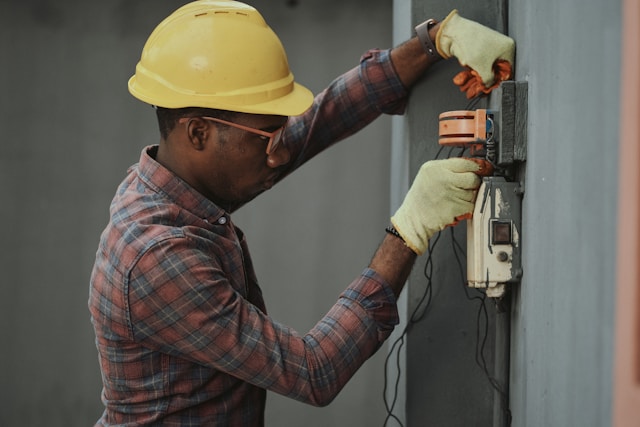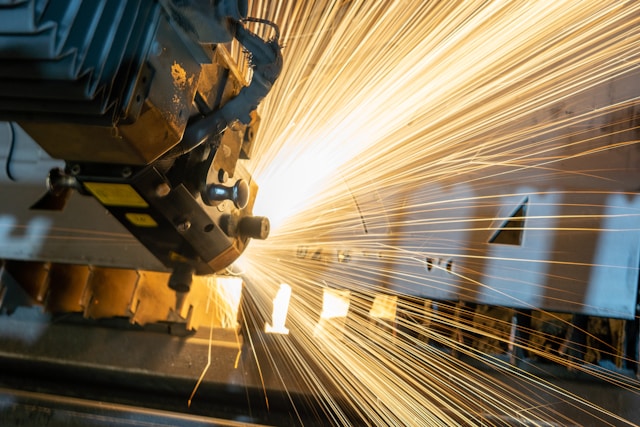
When shopping for home security, it’s best to learn about fire safety products, including Extinguishers and Smoke alarms. But what about Sprinklers? And why do we need to inspect them? Read on to learn more about these safe products or visit fire safety products NYC. You might be surprised at just how important they are. First, read on to learn how they can help prevent a fire. Then, read on to find out what you need to keep your home safe.
Extinguishers
Fire safety products are necessary to protect people from the ravages of fire. They have primarily fired extinguishers. These are designed for fires, such as electrical and combustible liquids. The National Fire Protection Association also recommends multipurpose fire extinguishers for home use. Typically, these products are rated for Class A, B, and C fires and are used on ordinary materials and electrical equipment.
Fire safety products are the first line of defense in an emergency. This is why fire extinguishers are an essential part of every building. Extinguishers must be visible and accessible. In addition, they must be regularly inspected and charged. When used correctly, these products can save lives and prevent costly damage. You should install fire extinguishers near exits and ensure employees know how to use them. Once installed, these products should be operated by pulling a pin, positioning the nozzle, and pressing a lever.
Smoke alarms
Smoke alarms are vital fire safety products. However, according to the U.S. Fire Administration, one in every four smoke alarms failed due to disconnected batteries or missing. In addition, one-quarter of all false alarms were caused by dead batteries. To help prevent these problems, you should replace your batteries regularly. If you don’t have time to change the batteries, you can press the TEST button with a broom handle and repeat the process every month.
The types of smoke detectors available in the market differ. The photoelectric type detects the smoke by the sudden light scattering when smoke enters its detector chamber. The ionization type detects the smoke by a physical process. Dual-sensor alarms detect smoke and emit signals to a central fire alarm control panel. Both types of alarms are required in workplaces, whether residential or commercial. Smoke alarms can be battery-powered or interconnected with the fire alarm system. Generally, new buildings must have interlinked smoke detectors with carbon monoxide detectors.
Sprinklers
While sprinklers can save lives, they can also increase fire response time. Unlike fire departments, which can pump water from a hose for up to 900 liters per minute, sprinklers can only release water when the sprinkler head activates and an alarm sounds. This delay in fire suppression will only make the fire worse and result in more damage. That is why sprinklers are essential. Read on to find out how they can save lives!
Sprinklers are essential for your building’s safety. Fire sprinkler systems come with different features—some help to control the spread of the fire while others are meant to suppress it. Control mode sprinklers slow the spread of the fire by pre-wetting combustibles around the perimeter. This mode of fire suppression prevents the building from collapsing or causing property damage. Depending on your type of sprinkler system, a sprinkler will either suppress the fire or control it.
Class A, B, C, D, and K fire extinguishers
The letters on a fire extinguisher haven’t changed in nearly 90 years, so the number and type of fire extinguishers you have in your home or office are still the same. This is the fault of UL, an organization that assesses fire extinguishers, not the manufacturer. There are a few different sizes and types if you’re looking to purchase a fire extinguisher.
A dry chemical fire extinguisher is red and usually weighs between 5 and 20 pounds. It works by dispersing a powder that contains mono ammonium phosphate. The powder coats the fuel and separates it from oxygen, ending the fire. For those of you who live in an apartment, you may want to invest in a class A fire extinguisher.
Location of extinguishers
Generally, people will find a fire safety extinguisher in a bedroom, kitchen, or hallway. Keeping the extinguisher close to a bedroom or a common fire area is a brilliant idea since most home fires occur overnight when most people are sleeping. In addition to bedrooms and hallways, extinguishers should be located near exits and other places prone to fires. You should have at least two fire safety extinguishers in your home for maximum protection.
Generally, fire safety extinguishers should be located within easy reach of employees. The NFPA specifies a maximum distance from fire safety extinguishers to occupants. Fire safety extinguishers should be located near exits and doors in a building with several floors. However, extinguishers may be installed in cabinets or wheeled carts. In all cases, the operating instructions should be visible.
Training employees to use extinguishers
As a business owner, you can make your workplace safer by educating employees on fire safety products. Proper fire safety education can distinguish between a small, contained fire and a large, uncontrolled fire. Training employees in properly using fire safety products will also help employees stay calm and confident if a fire occurs. Additionally, fire safety education can help you avoid large losses by preventing fires in the first place.
Fire safety education should include information on using fire extinguishers, properly using fire-fighting equipment, and evacuating in an emergency. Additionally, employees should be aware of fire extinguishers and when to use them. OSHA also requires employers to have a written emergency plan, including details on fire safety procedures and evacuation routes. After training employees, the plan should include instructions on what to do if a fire does occur.





More Stories
Understanding the Importance of Regular Electrical Maintenance in Homes
The Evolution and Impact of Graphic Design in Business Communications
Ways Machine Vision Integration Can Revolutionize Manufacturing